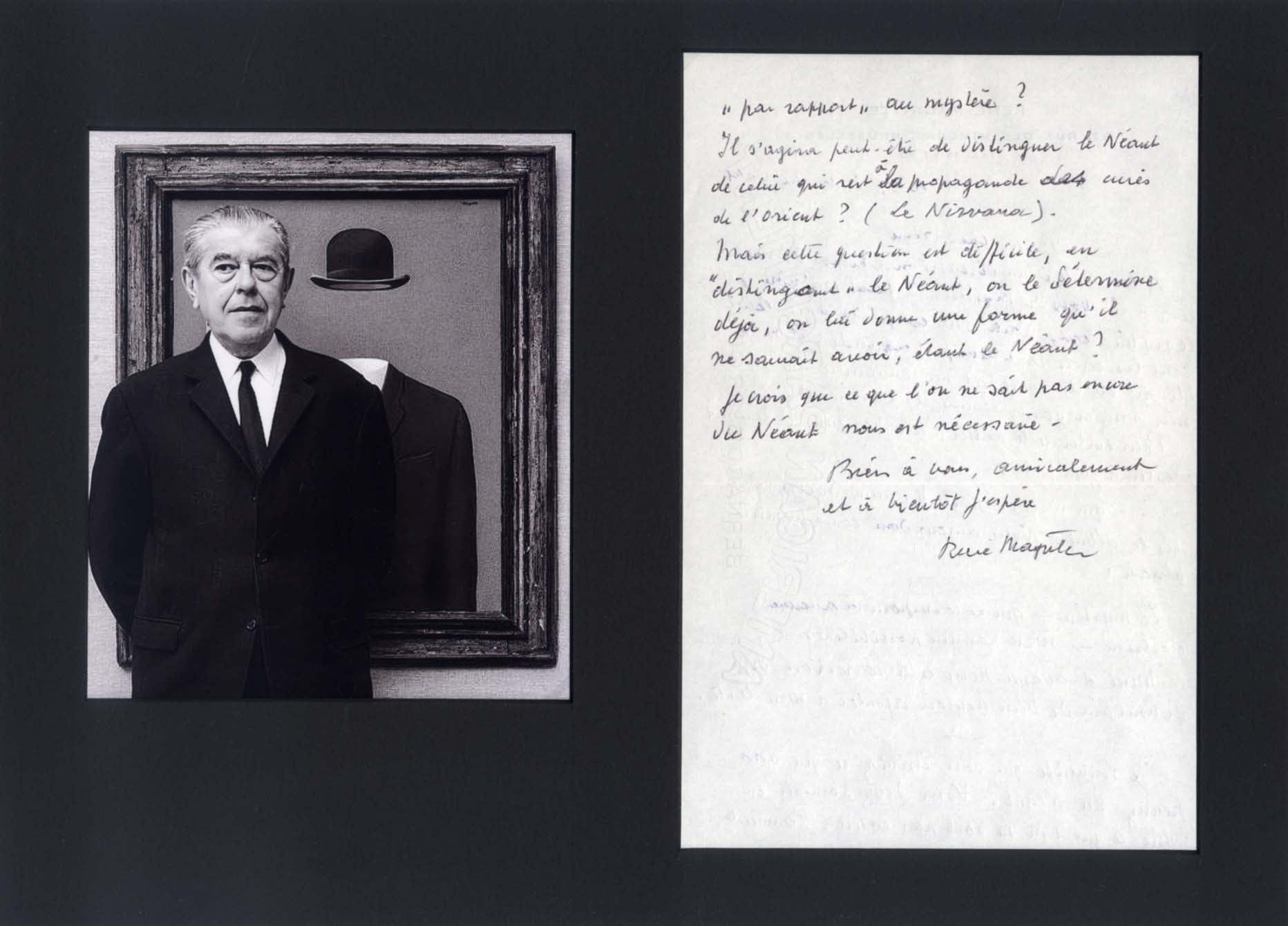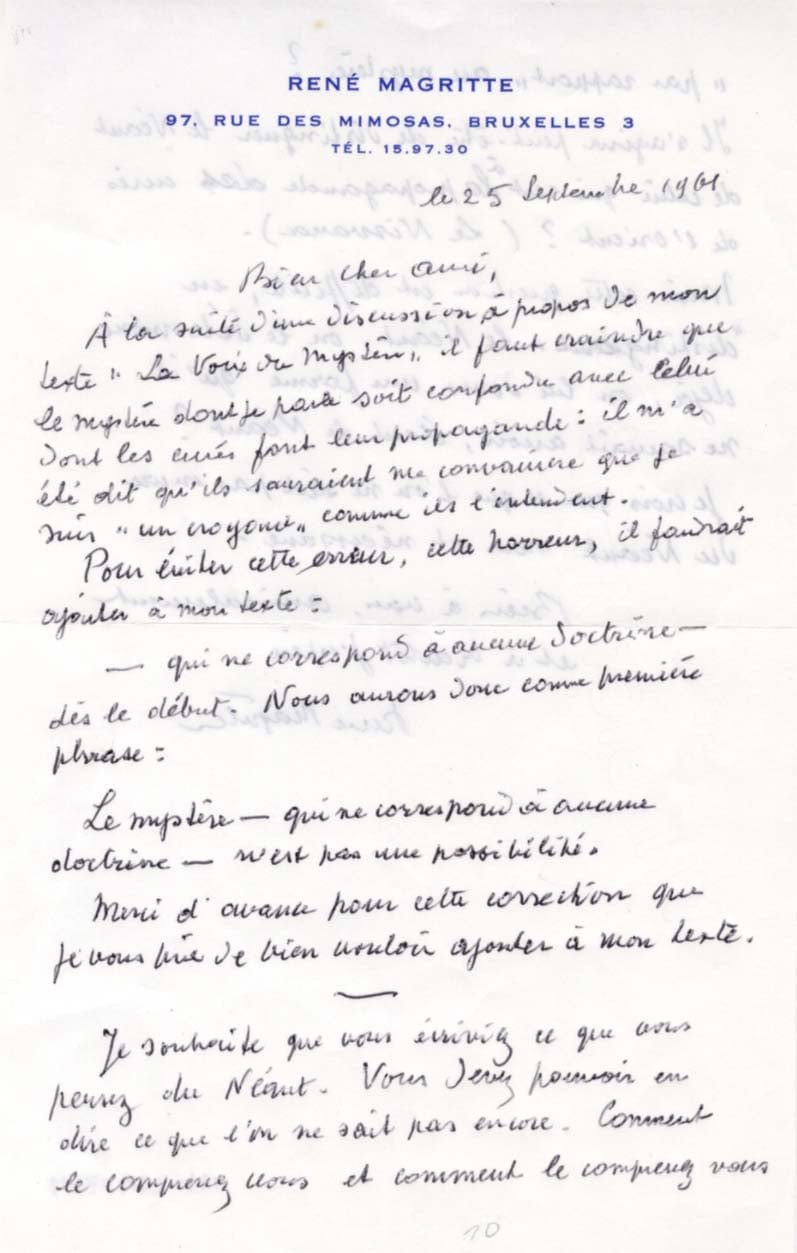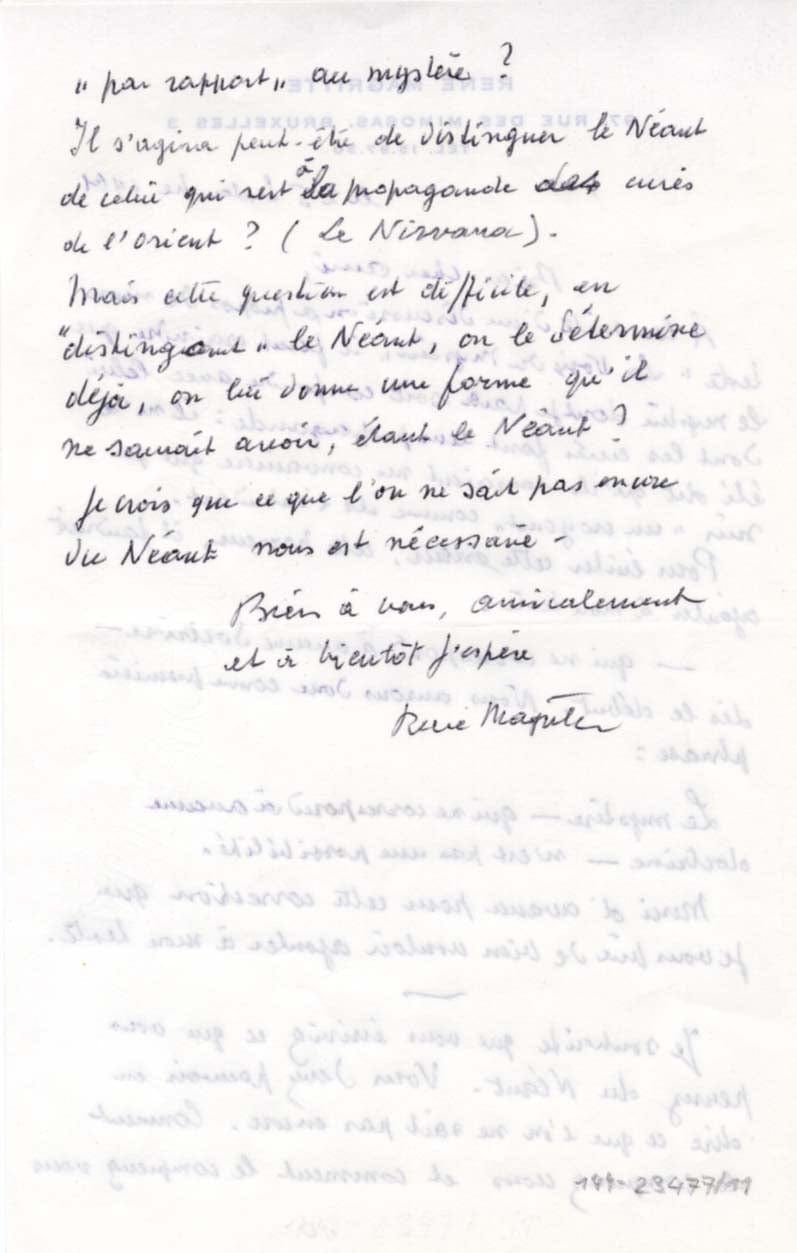描述
Autograph letter signed, two pages (both sides), 5,25 x 8,5 inch, personal stationery, Brussels, 25.09.1961, in French, to Belgian poet Andre Bosmans - concerning his article ‘La voix du mystere’ to be published in Rhetorique (a review founded by Bosmans), written and signed in dark ballpoint ink "René Magritte", attractively mounted (removable) for fine display with a photograph of René Magritte (altogether 12,5 x 9 inch), with a horizontal letter fold - in nearly very fine condition.
In parts:
"Bien cher ami,
A la suite d`une discussion a propos de mon text `La Voix du Mistère`, il faut craindre que le mystère don`t je parle soit confondu avec celui don`t les curés font leur propaganda: il m`a été dit qu`ils sauraient me convaincre que je suis `un croyant` comme ils l`entendent.
Pour éviter cette erreur, cette horreur, il faudrait ajouter à mon texte:
- qui ne correspond à aucune doctrine - dès le début. Nous aurons donc comme première phrase:
Le mystère - qui ne correspond à aucune doctrine - n`est pas une possibilité [...]
Je souhaite que vous ecriviez ce que vous pensez du Néant. Vous devez pouvoir en dire ce que l`on ne sait pas encore. Comment le comprenez vous et comment le comprenez vous `par rapport` au mystère?
Il s`agira peut-être de distinguer le Néant de celui qui sert à la propaganda des curés de l`Orient? (Le Nirvana).
Mais cette question est difficile, en `distingant` le Néant, on le determine déjà, on lui donne une forme qu`il ne saurait avoir étant le Néant?
Je crois que ce que l`on ne sait pas encore du Néant nous est nécessaire.
Bien à vous, amicalement et à bientôt j`espère
René Magritte"
Translated:
"Very dear friend,
Following a discussion about my text `The Voice of the Mistère`, one must fear that the mystery of which I speak will be confused with that which the priests propagate: I was told that: They would be able to convince me that I am `a believer` as they see fit.
To avoid this error, this horror, I should add to my text:
- which does not correspond to any doctrine - from the beginning. We will therefore have as our first sentence:
The mystery - which does not correspond to any doctrine - is not a possibility [...]
I want you to write down what you think about Nothingness. You must be able to say what we don't yet know. How do you understand it and how do you understand it `in relation` to the mystery?
Perhaps it will be a matter of distinguishing Nothingness from that which serves the propaganda of the priests of the East? (Nirvana).
But this question is difficult, by `distinguishing` Nothingness, we already determine it, we give it a form that it could not have being Nothingness?
I believe that what we do not yet know about Nothingness is necessary for us.
Best regards, friendly and see you soon I hope
René Magritte"
有关该人的更多信息
Profession:
(1898-1967) Belgian Surrealist artist - he became well known for creating a number of witty and thought-provoking images
Year of Birth: 1898
真实性证书
我们所有的作品均以真实性证书出售。如果一件作品错误或不喜欢亲笔签名,那么您一生就会拿回钱。
付款和安全
您的付款信息已安全处理。我们无法存储信用卡详细信息,也无法访问您的信用卡信息。



